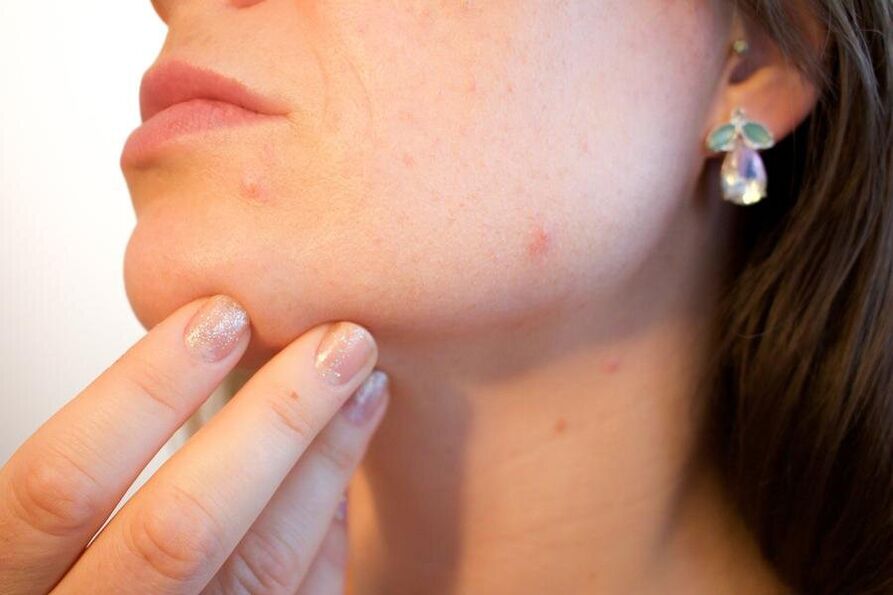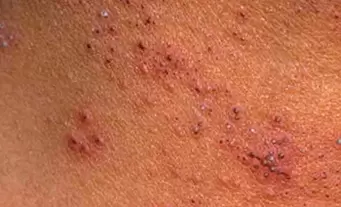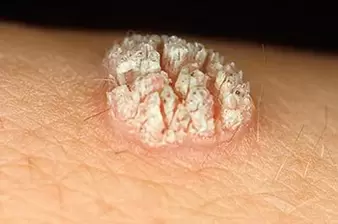For a complete answer to the question, it is necessary to delve into the essence of the process of penetration of the infection into the human body. Many experts have made great efforts to uncover the full nature of the emergence and development of the HPV virus, which is well known today. Over the past 30 years, the human papillomavirus has been studied extensively. As a result and during the study, more than 100 strains of bacteria of the nature of the disease were discovered. Types of papillomas on the body are not of the same type, but are either malignant or benign.

HPV is a type of cancer that appears on any part of the skin or the inner covering. But, unfortunately, some pathological strains are later transformed into a malignant tumor. You need to know absolutely everything about these types from "A" to "Z".
Types of skin development
The appearance of growths on the skin of the body is indicated by a weakening of the immune system. That is, she has both the protective function and the role of some kind of barrier. When certain types of human papillomavirus enter the body, immunity does not allow the HPV virus to take root. This has been proven by research.
Long-standing medical practice has been able to divide all skin papillomas into three types:
- HPV is of the non-cancerous type (such a growth will not cause cancer, but will reduce immunity).
- The virus is not highly oncogenic (has a low threshold of pathology).
- Infections are potentially carcinogenic (due to high cancer thresholds).
Signs of papilloma on the skin, although present, are not large, but are also a cause for concern. Do not allow growth (especially in the genital area). For a complete understanding of which type causes the appearance of a lump, you should contact a dermatologist. To begin with, your doctor will conduct an imaging test and, if necessary, provide direction for further analysis and research.

Do not start self-medication if you do not yet know what type of papilloma you have - this can lead to irreversible consequences.
It is important to consult your doctor about prescribing antiviral therapy. Without medical treatment, removal of the papilloma cannot guarantee a lasting result, since with the subsequent decline in immunity there is a possibility of papilloma regeneration due to viral activity.
The number of new recruits available is in the tens. You need to learn what a papilloma is and remember that the entire range of growths presented is divided into five types. They are divided by symptoms, color palette and cancer risk. We will describe each group in more detail later. Thus, the varieties of papillomas are divided into 5 types.
The first type is simple papilloma
Group I - simple papilloma. Another name is normal or vulgar growth. This type of papilloma is common. A clear sign of the appearance of a small pimple on the skin. During the development of papillomas of any known type, it is transformed into a thickened, dark-colored form of keratosis. Warts are usually localized to the skin, both singly and in groups. The preferred locations for moles are the hands (inside and outside of the hands) and the lower part of the face (mainly the lips and chin).
It should be noted that there are vegetative papillomas, which are practically not externally different from gross ones, only the keratinized outer shell shows that they belong to them. Such warts cause discomfort when walking. Getting rid of them is not easy, but it can be done at home.
The second type is flat

Group II - flat papilloma. A species-specific feature, manifestation of group cumulative growth. They are practically bulging and dark in color.
Grows round, long, oval in shape, protruding 1-2 mm above the skin surface. Flat papillomas are localized around the mouth, on the face, and on the upper half of the body. Sometimes papillomas form on the neck. Place of distribution - upper body. In some cases, they are observed in the genital area. Skin papillomas still fall into this group, and mostly appear in adolescence. Warts are localized on the neck, face and hands of young people. The main reason for the occurrence is a failure of the immune system.
There are also papillomas on the labia, cervix in girls, penis in men, in the rectum, near the anus. These formations are arranged in groups, merging with each other. Flat flesh-colored papillomas, sometimes slightly darker than the rest of the skin, are formed under the influence of 10, 49, 28 types of papilloma virus.
The third type - pointed
Group III - pointed papillomas on the face and other areas. Another name is warts. The main place of dislocation of the tumor is the mucous membrane. Usually, they affect the genitals and body, spoiling the appearance and affecting everything on the inside. It is these strains that are classified as potentially carcinogenic. It is marked by rapid growth from one specimen to many in a short time. The mode of entry of genital warts is sexual intercourse. The presence of a sharp mole is undesirable for a pregnant woman, since there is a chance that the baby will get an infection. The latter can occur as the infant passes through the birth canal.
Fourth type - fibrous papilloma
Group IV - fibrous malformed papilloma on the body. In scientific circles they are called acrochords. A characteristic feature of neoplasia is that the leg is forced to support the mole itself. The target age group is middle-aged people, older women and men. Such growths are often referred to as senescence.
The human papillomavirus has been growing in the human body for many years, and after a while, it manifests as a wart. Places of tumor formation: eyelids, neck, armpits, groin and chest area. These developments are traumatic and often, by negligence, disrupted. This is a very dangerous phenomenon, so it is imperative to show the wound to a doctor.
Fifth type - internal
Group V - internal moles. This subgroup includes all tumors that form on the internal organs of the body. These include warts located on the inner wall of the stomach and rectum. Grows in the mouth and throat, forms in the bladder. It is the presence of condylomas of this group that cannot be recognized independently, as this requires a special diagnosis. But the presence of growth causes serious symptoms. How dangerous cancer is to the human body is certainly unpredictable. Research is carried out every year, and new results are constantly being produced.
But it is clear that this fact cannot be ignored. For example, growths in the bladder can lead to internal bleeding, or eventually become cancerous. Warts in the larynx disrupt respiratory function and speech. By the way, the latter can also localize in the newborn - therefore, pregnant women need to be especially vigilant.
Causes of papillomas
HPV is an infection that, when entering the human body, causes all kinds of development. Some strains of cancer mutate into cancerous tumors. We list the most common causes of infection:
- constant change of sexual partner;
- the presence of bad habits (alcohol, smoking, drug addiction);
- reduced immune defenses;
- violation of physiological processes in the body;
- careless attitude in personal hygiene (shared personal belongings of others).
Common symptoms of all types
The most visible manifestation of the presence of HPV in women in the body is the growth of external warts. All characteristic features depend on the location of the tumor. Let's consider in more detail the obvious symptoms, depending on the type of papilloma and its types.
- Pointed condyloma. It occurs on the mucous membranes of the genital organs, larynx, oral cavity, on the inner wall of the stomach and rectum. The genitals are accompanied by mild itching and an unpleasant odor. This type of growth should not be ignored, since carcinogenic pathologies can lead to disastrous consequences.
- Intraductal papilloma. The origin of the ducts in the mammary gland. Characteristic signs of the presence of growths: redness around the nipple, slight itching and burning. With slight pressure on the nipple, a green or greenish discharge will be released. Breast papilloma is not a cancer at first, but in its neglected state it turns into a malignancy.
- Plantar warts. Developmental processes are marked by the presence of cob formation on the substrate. When walking, pressing, squeezing causes discomfort. Pain is manifested by a sharp and acute pain in the cancer area.
- Papules in the throat. The early growth phase is not marked by significant symptoms, but during development the symptoms increase. Voice changes, feeling of delirium in the throat, respiratory dysfunction. Difficulty swallowing saliva and food.
- Flat warts. They occur in adolescents on the lower part of the face and arms (on the outside of the hand). No serious symptoms. Only occasional itching.
Skin cancer treatment
After discovering acne on the body, contact a specialist - a dermatologist to have a doctor prescribe a treatment. Do not self-medicate, as some strains are highly carcinogenic (this applies to both men and women).
HPV (human papillomavirus) with external signs in the form of a tumor is not everything. These tumors can easily transform into malignancies and this is already very dangerous. It should be noted that the human papilloma virus remains in the body for the rest of its life. The result can only be reduced activity, or in other words putting the infection drive into a "sleep" state. But laser therapy will help to completely remove the mole completely without causing pain.
Pay attention to the external changes of the skin, see a doctor in time. Take vitamin complex and support the immune system. Follow certain rules, and health will be safe. In addition, the types of papillomas on the face, as learned and the photos can be seen on the Internet, are different, and before resorting to removal measures, you need to find out what kind of tumor they are. You can find descriptions of any software on the World Wide Web.

























